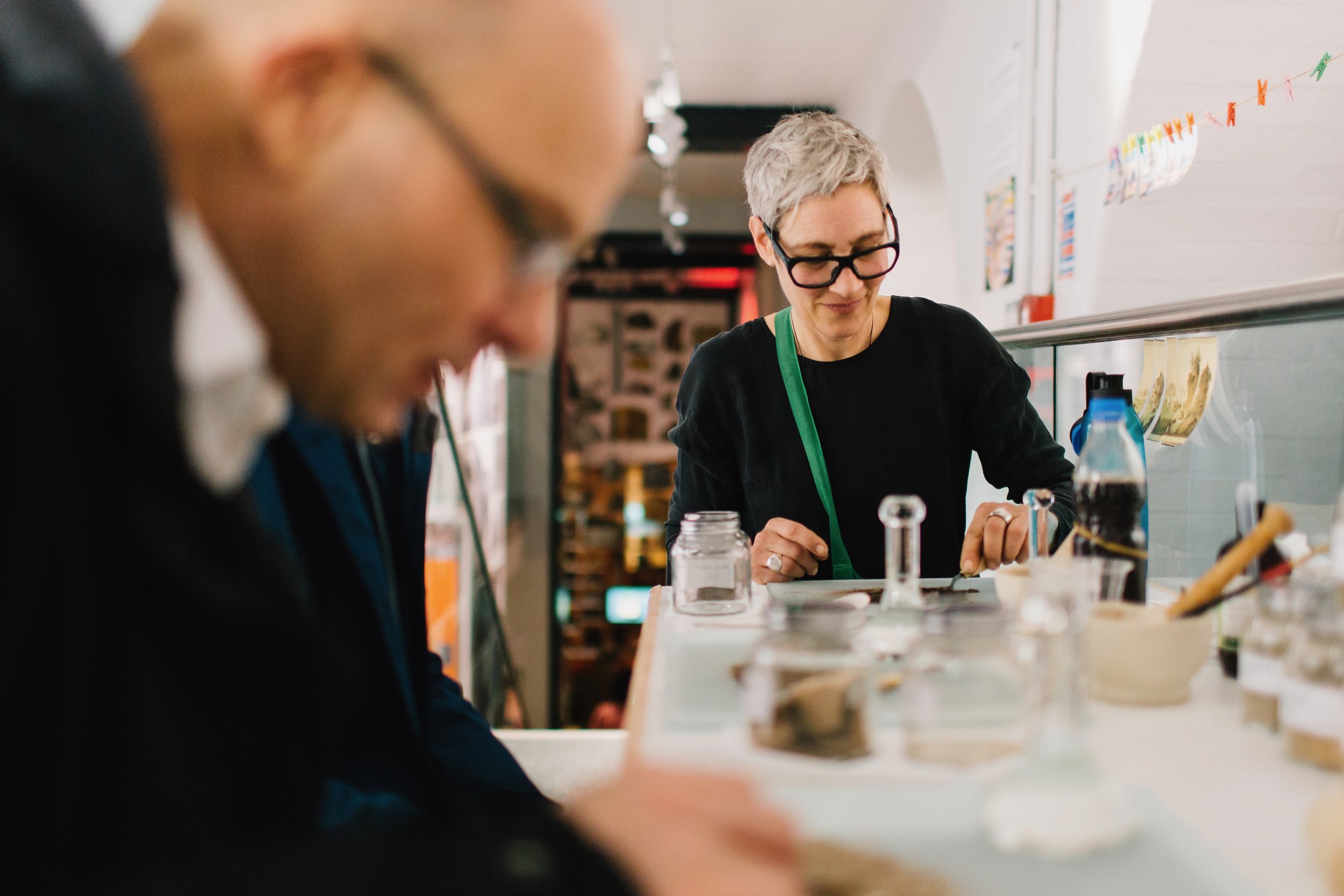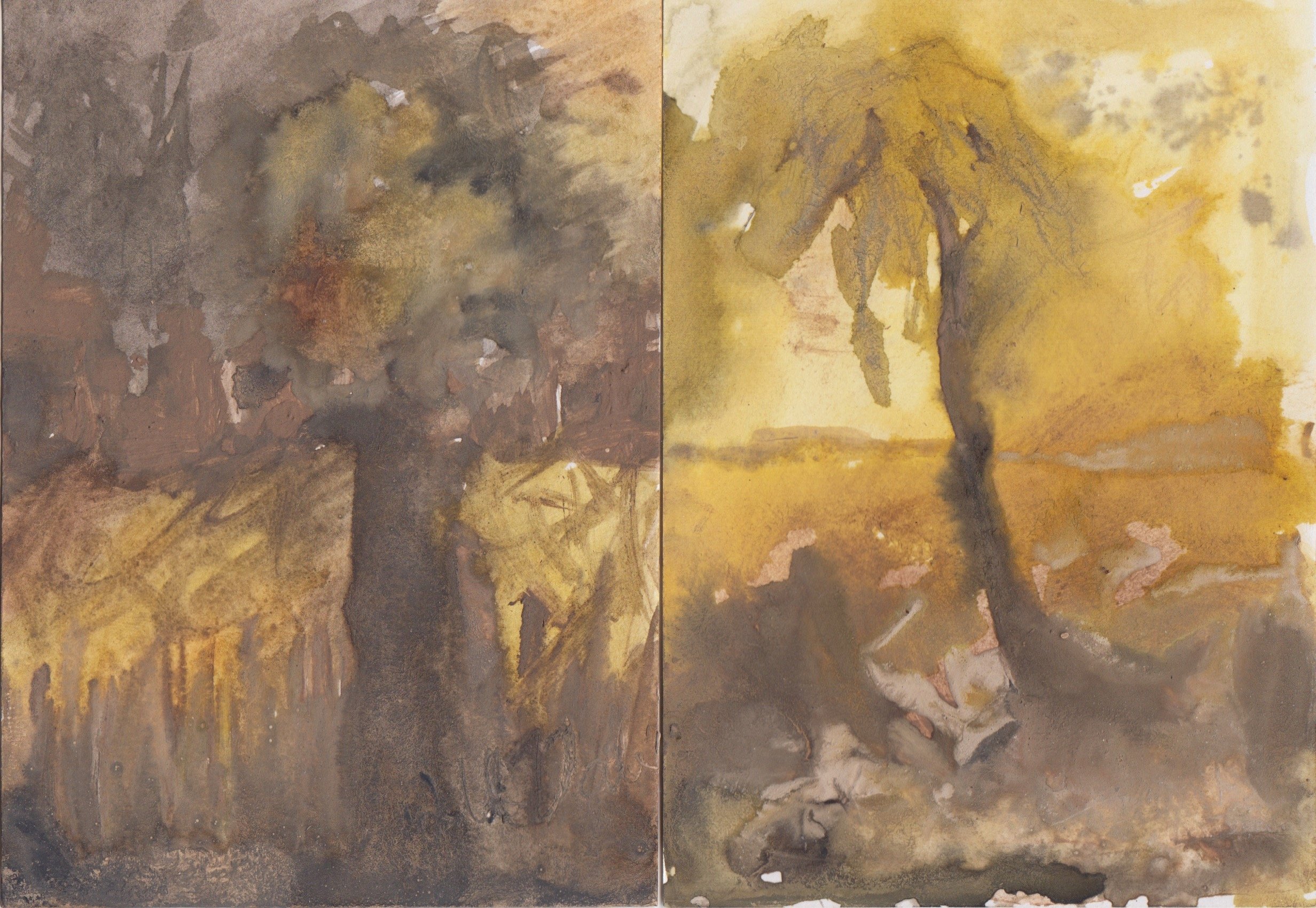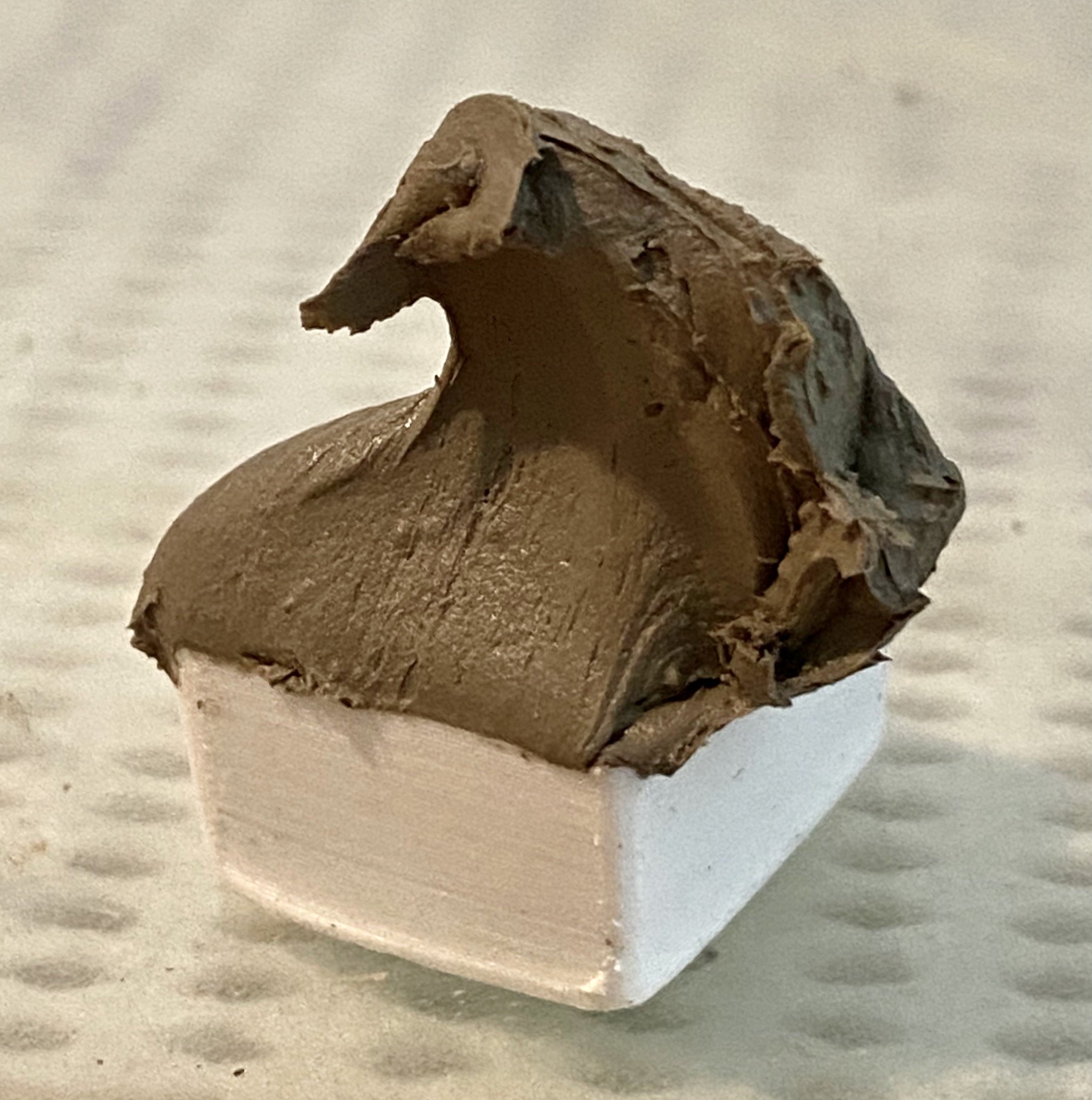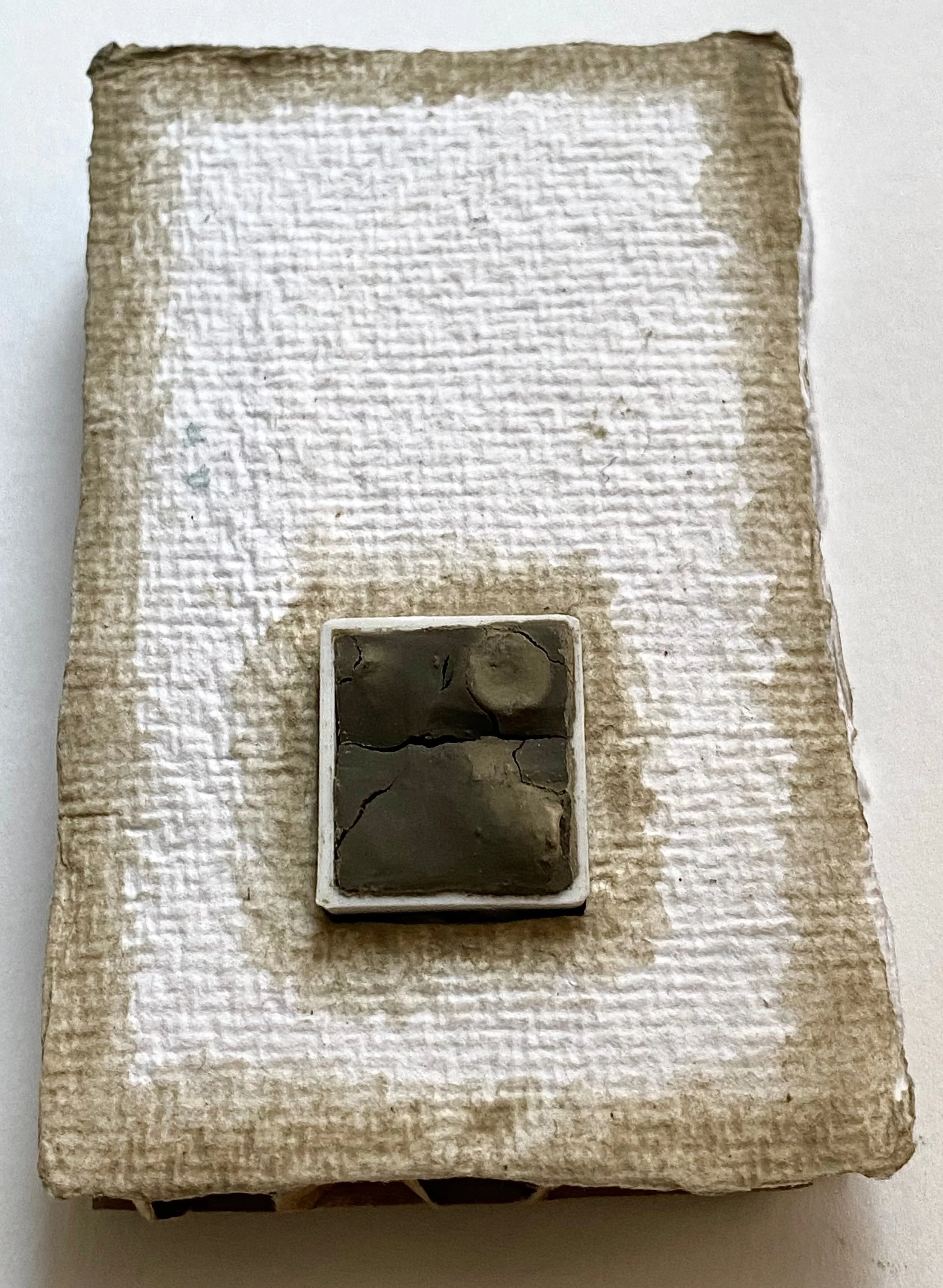My semi-wild allotment has become my materials source moving my place-based practice into research and innovation. It’s a way for me to imagine, experiment and process ways to reconnect with the natural world. Using permaculture principles and tools in my creative practice, I aim to move beyond sustainable to a regenerative practice that is replenishing for me, participants and the planet.
Wild plants usually occupy the edges and the margins, but I’m interested in what could happen if they returned to the centre of our culture. Their evolution, historical uses and contemporary attitudes towards them are my context for reflecting on value, time and the environmental crisis. Sharing their stories encourages care for them and the rest of the more-than-human world.
This is what Tim Ingold calls “thinking through making, rather than making through thinking”. I move between knowing, not knowing and unknowing, from certainty to uncertainty; our vulnerability mirroring the state of ecosystems that all of life depends on.
Artwork
Dip. Test.
2019 - 2025 (ongoing)
When I make ink i use strips of paper to test hue and saturation. I record whether it’s an ink or pigment, the plant source, location, date and additives. If the ink is reduced to increase saturation there are multiple numbered paper strips.
Recording the process of making ink accumulates year by year, capturing the flow of seasons, encounters with natural materials, the pace of my life, space for ink making and curiosity about colour. Inks have taught me to accept what I find, the colour, quantity and yield.
Exhibition
A Shrine to Hawthorn
Climate. Emergency. Hope., Turnpike Gallery, Leigh, 2023
Rich in folklore and medicine as well as a protective habitat for birds, Hawthorn is a plant for our times; it regulates blood circulation, increasing flow to the heart, helping us to feel and move through grief and loss.
Hawthorn often marks a boundary from the time when common land was taken into private ownership by the Enclosure Acts. Approximately 1/5 of England’s area became privately owned between 1604 - 1914 and over 5200 enclosure Bills were passed by Parliament. Before this a lone Hawthorn signalled a place for communities to meet, and in Ireland was believed to signal a portal to the Fairy world.
Hawthorn watercolour, petri dish with Hawthorn dyed SCOBY, Hawthorn ink & medicinal tincture, gilded Hawthorn branch, Hawthorn drawn in Hawthorn ink
Exhibition
Materials Describe Themselves: Hawthorn
Eastside Projects’ EOP Summer Camp (members show) 2024
How I work with the inks and pigments I make is evolving to develop situations or material forms that enables them to ‘describe themselves’, transforming plants into a state of animacy. They become participants in situations orchestrated by me.
Workshop
Down to Earth
Lapworth Museum of Geology, University of Birmingham, 2020
Down to Earth was part of late night opening for valentines at Lapworth Museum of Geology. The event was themed around human relationships.
Based in the beautiful mineral gallery, I invited visitors to process earth pigments into watercolours while we discussed our relationship to the earth, one another and more-than-human species.
Using the earth pigment watercolours and my botanical inks visitors could paint a panel for a myriorama or ‘endless landscape’. Myrioramas were a Victorian card game of printed panels which could be rearranged in any order to make an ‘endless landscape’.
Artwork
Time Capsules
Eastside Projects Winter Fair, 2022
I made and sold small batches of 3 inks and a watercolour that referenced deep time, historical ink, mineral extraction and plant wisdom:
Silurian Seabed watercolour made with processed earth gathered from Wren’s Nest, Dudley; Oak Gall Iron from invasive Knopper Galls at the allotment site; Copper Oxide from found scraps of copper pipe; Sage harvested from my plot.
The table generated lots of conversation about climate, materials, the natural world and natural colour.
Artist Walk
A Plant Pilgrimage
Commissioned by Sam Pickett / SAP
After participating in The Hexting Project during lockdown (2020) Sam invited me to lead a colour foraging walk around Carnforth, Lancashire.
I devised a ‘plant pilgrimage’ to identify and share knowledge about the plants on my semi-wild allotment as we saw them along the route in Lancashire.
The series of walks were shared in Sam’s publication for the project.
Exhibition
Monitor: May 2023
Eastside Projects ‘extra ordinary people’ (members) Summer Camp exhibition, 2023
40 paper ink test strips hover above a shelf piled with botanical pigments. An A4 text panel describes the plant and process of making each pigment alongwith the reason for removing the plant.
1 & 2. Meadow Cranesbill
Dominating the plot, protecting the ground from baking sun, blooms fall rapidly.
Young pre-flower leaves & stems: 522g+2.5ltr water = 900ml ink; lake 12g alum+6g soda
3, 4 & 5. Woad
Spreading across the plot, easily mistaken for Evening Primrose in its early growth.
Whole plant with flower buds, no root: 288g+1ltr water = 700ml ink; lake 8g alum+4g soda
6 & 7. Field Maple
Many saplings, a potential future forest.
Young leaves trimmed from entrance: 229g+1.2ltr water = 800ml ink; lake 8g alum+4g soda
8 & 9. Oak
The only oak in the hedge, 3 saplings growing amongst the blackcurrants.
Branch cut to uncover raspberries: 100g+750ml water = 620ml ink; lake 6g alum+3g soda
10 & 11. Orange Hawkweed
Furry, fiery, bulbous multi-headed blooms with dense mat of roots.
Removed for Melancholy Thistle: 291g+1ltr water = 450ml ink; lake 8g alum+4g soda
12 & 13. Hawthorn
Buds bouncing in gusty wind, held by curled leaves.
Accidentally snapped a branch: 132g+800ml water = 680ml ink; lake 7g alum+3.5g soda
14 & 15. Field Horsetail
Jewelled with rain, precious luminosity and enduring plant presence.
Young plants removed to hinder spread: 200g+1ltr water = 750ml ink; lake 8g alum+4g soda
16, 17, 18 & 19. Teasel
Plotting the constellation of teasel heads is complex with their constant motion.
Too many teasels: 595g+1ltr water = 900ml ink; lake 10g alum+5g soda (re-lake 700ml run-off 8g alum+4g soda)
20 & 21. Apple or Cherry
New neighbours cut everything down in nesting season and haven’t done much since.
Checking prunings for nests I take a pre-flowering branch (solar extraction) 300ml ink; lake 5g alum+2.5g soda
22, 23, 24 & 25. Acer
The Snakeskin Acer is slowly dying, enriching the plot’s ecology as it breaks down.
A friend prunes her acer to increase light: 346g+2.5ltr water = 1800ml ink; lake 20g alum+10g soda (relake 30g alum+15g soda) +20g calcium carbonate to make a pastel
26 & 27. Lemon Balm
Vigorously spreading across the plot, plants become decision makers for paths and sit-spots.
Removed for plant diversity: 37g+400ml water = 400ml ink; lake 6g alum+3g soda
28 & 29. Meadow Cranesbill
All seed-head and flamingo-leg stalks scattering my attention.
Cleared to encourage dropwort: 352g+2ltr water = 1200ml ink; lake 18g alum+9g soda
30 & 31. Cotoneaster
A laddering branch escaped last years coppicing as Heartbird’s favourite perch.
Pruned from shading caraway: 77g+600ml water = 350ml ink; lake 4g alum+2g soda (re-lake 6g alum+3g soda)
32, 33, 34, 35 & 36. Honesty
Spreading every year, I notice a bee-fly; qualities that attract readily spread.
Seed heads gathered before they disperse: 116g+500ml water = 300ml ink; lake 4g alum+2g soda (re-lake 5g alum+2.5g soda; (1st run-off 250ml ink; lake 5g alum+ 2.5g soda)
37, 38, 39 & 40. Teasel
Cupped leaves fill with rain and fallen insect bodies.
Mature, pre-flowering plants removed from path: 600g+3ltr water = 2ltr ink; lake 20g alum+10g soda
Artwork
Fallen
Every year I have to coppice the hedges around my plot to stay within my tenancy agreement. The hedges are diverse native planting, reminiscent of the sites history as farmland. It’s gruelling work to manage the hedges, but necessary to keep as habitat and food source for the non-human residents and vistors. As hard as the physical work is, its the emotional toll that’s hardest; removing the catkins which grow at the end of winter and are an early food source for birds and insects.
These drawings glow with the energy of the captured pollen.
A3 paper with Hazel pollen.



























